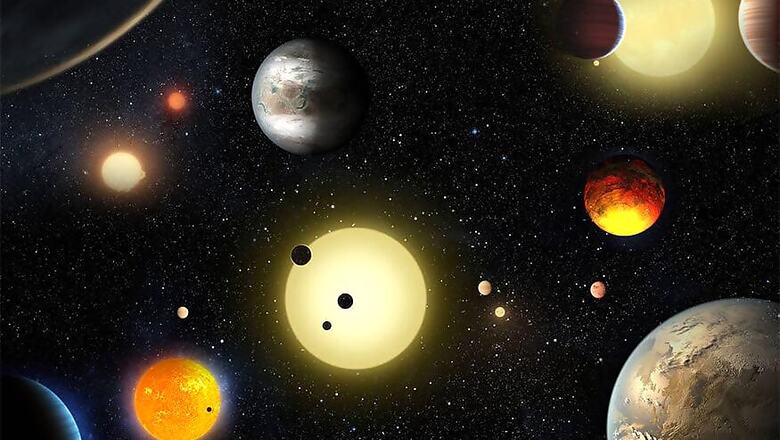
views
An Earth-sized exoplanet with two suns in its sky -- like Luke Skywalker's home planet Tatooine in "Star Wars" -- could be habitable, says a study.
Thanks to observatories such as NASA's Kepler space telescope, we know that two-star systems can indeed support planets, but such planets discovered so far are large and gaseous.
In the new study published in the journal Nature Communications, the scientists asked the question "if an Earth-size planet were orbiting two suns, could it support life?"
The findings suggest that it could, if located at the right distance from its two stars. Also read: NASA Releases Night-Time Global Maps of Earth
In a particular range of distances from two sun-like host stars, a planet covered in water would remain habitable and retain its water for a long time, the study said.
"This means that double-star systems of the type studied here are excellent candidates to host habitable planets, despite the large variations in the amount of starlight hypothetical planets in such a system would receive," said Max Popp, research scholar at Princeton University in New Jersey, and the Max Planck Institute of Meteorology in Hamburg, Germany.
The researchers created a model for a planet in the Kepler-35 system. Also read: First-Ever Picture of Black Hole Snapped by Astronomers
In reality, the stellar pair Kepler-35A and B host a planet called Kepler-35b, a giant planet about eight times the size of Earth, with an orbit of 131.5 Earth days.
For their study, researchers neglected the gravitational influence of this planet and added a hypothetical water-covered, Earth-size planet around the Kepler-35 A and B stars.
They examined how this planet's climate would behave as it orbited the host stars with periods between 341 and 380 days.
"Our research is motivated by the fact that searching for potentially habitable planets requires a lot of effort, so it is good to know in advance where to look," said Siegfried Eggl, a California Institute of Technology (Caltech) postdoctoral scholar at NASA's Jet Propulsion Laboratory, Pasadena, California.
"We show that it's worth targeting double-star systems," Eggl said.Also read: NASA Finds Habitable Conditions on Saturn Moon




















Comments
0 comment